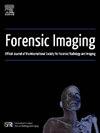Self-contained crash or run-over by a vehicle? Integrating post-mortem CT and kinematic analysis to reconstruct motorcycle accident dynamics
IF 1
Q4 RADIOLOGY, NUCLEAR MEDICINE & MEDICAL IMAGING
引用次数: 0
Abstract
Differentiating between primary impact injuries and those caused by a run-over event in motorcycle accidents can be challenging due to the complexity of trauma mechanisms and the lack of standardized diagnostic criteria. This report presents the case of a 57-year-old motorcyclist found deceased following a collision, with initial suspicions raised by surveillance footage suggesting the possibility of a run-over by a passing car. A comprehensive forensic investigation was conducted, including autopsy, post-mortem computed tomography (PMCT), and kinematic analysis, to determine the cause of death and reconstruct the accident dynamics.
The PMCT played a pivotal role in accurately documenting complex injury patterns, such as bilateral anterior-posterior fractures of the skull, ribs, and pelvis, which initially suggested a crushing mechanism. However, integration with kinematic findings and circumstantial evidence excluded the involvement of the suspected car. Instead, it was determined that the injuries resulted from compression between the overturned motorcycle and a tree during the collision.
This case highlights the indispensable value of PMCT in forensic investigations, particularly in identifying subtle fracture patterns and enhancing injury interpretation. Despite the sensitivity and applicability of PMCT in traffic accidents, there is limited data regarding the interpretation of differential diagnoses between crush injuries and blunt-force impacts in motorcyclists. The systematic use of PMCT, combined with interdisciplinary collaboration between forensic pathologists, radiologists, and kinematic experts, represents a significant advancement in reconstructing complex traffic accidents and reducing uncertainty in medico-legal evaluations.
是自行撞车还是被车辆碾压?结合死后CT和运动学分析重建摩托车事故动力学
由于创伤机制的复杂性和缺乏标准化的诊断标准,区分摩托车事故中主要的撞击伤和由碾过事件引起的伤害可能具有挑战性。本报告介绍了一名57岁的摩托车手在碰撞后被发现死亡的案例,最初的怀疑是由监控录像显示可能是一辆过路汽车碾压引起的。进行了全面的法医调查,包括尸检、死后计算机断层扫描(PMCT)和运动学分析,以确定死亡原因并重建事故动态。PMCT在准确记录复杂损伤模式方面发挥了关键作用,如双侧颅骨、肋骨和骨盆的前后骨折,这最初表明了粉碎机制。然而,结合运动学调查结果和间接证据排除了可疑车辆的参与。相反,经确定,受伤是由于在碰撞过程中被翻倒的摩托车和一棵树之间的挤压造成的。这个案例强调了PMCT在法医调查中不可或缺的价值,特别是在识别微妙的骨折模式和加强损伤解释方面。尽管PMCT在交通事故中的敏感性和适用性,但关于摩托车手挤压伤和钝力撞击的鉴别诊断解释的数据有限。系统地使用PMCT,结合法医病理学家、放射科医生和运动学专家之间的跨学科合作,在重建复杂的交通事故和减少医学法律评估的不确定性方面取得了重大进展。
本文章由计算机程序翻译,如有差异,请以英文原文为准。
求助全文
约1分钟内获得全文
求助全文
来源期刊

Forensic Imaging
RADIOLOGY, NUCLEAR MEDICINE & MEDICAL IMAGING-
CiteScore
2.20
自引率
27.30%
发文量
39
 求助内容:
求助内容: 应助结果提醒方式:
应助结果提醒方式:


